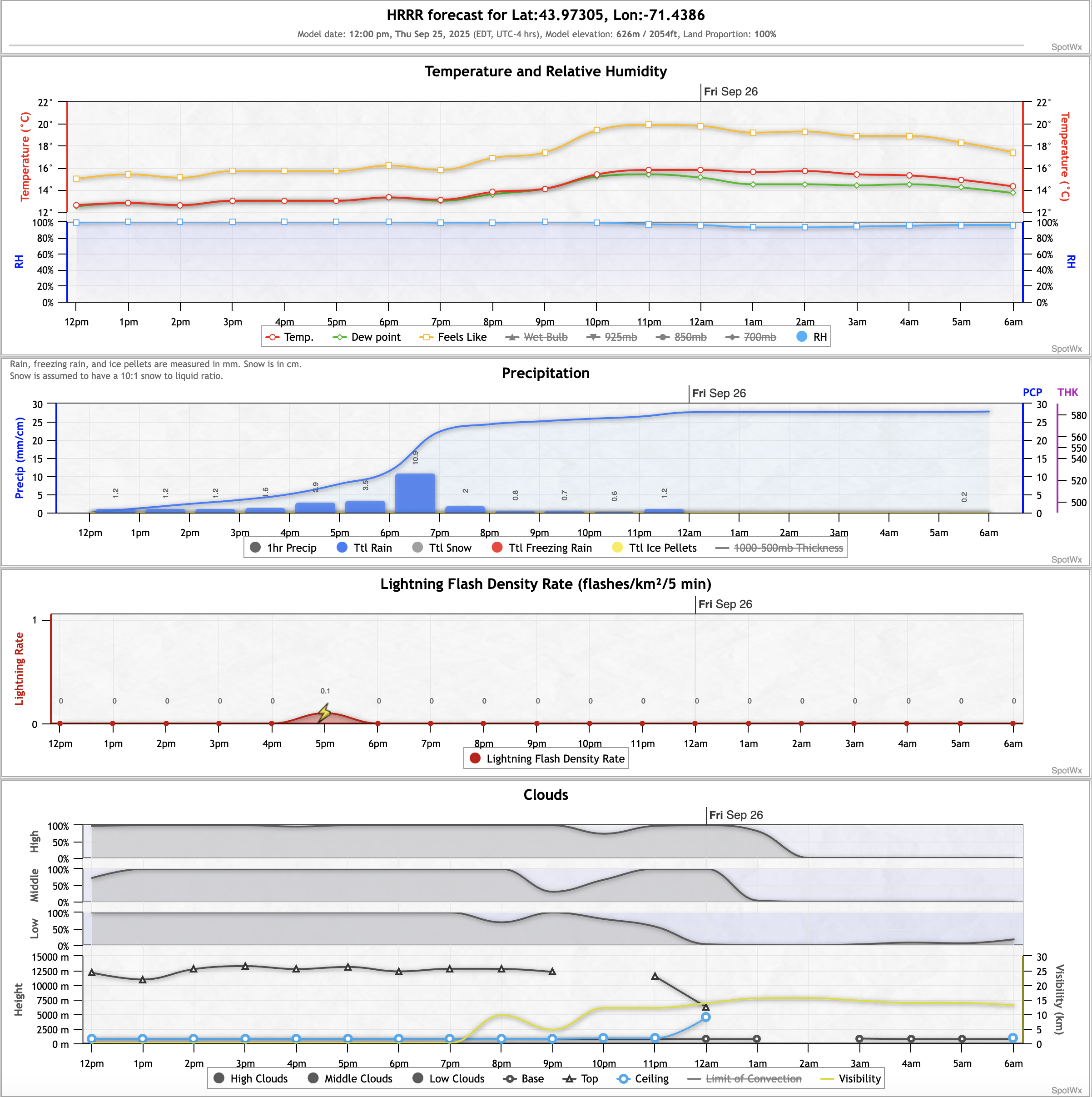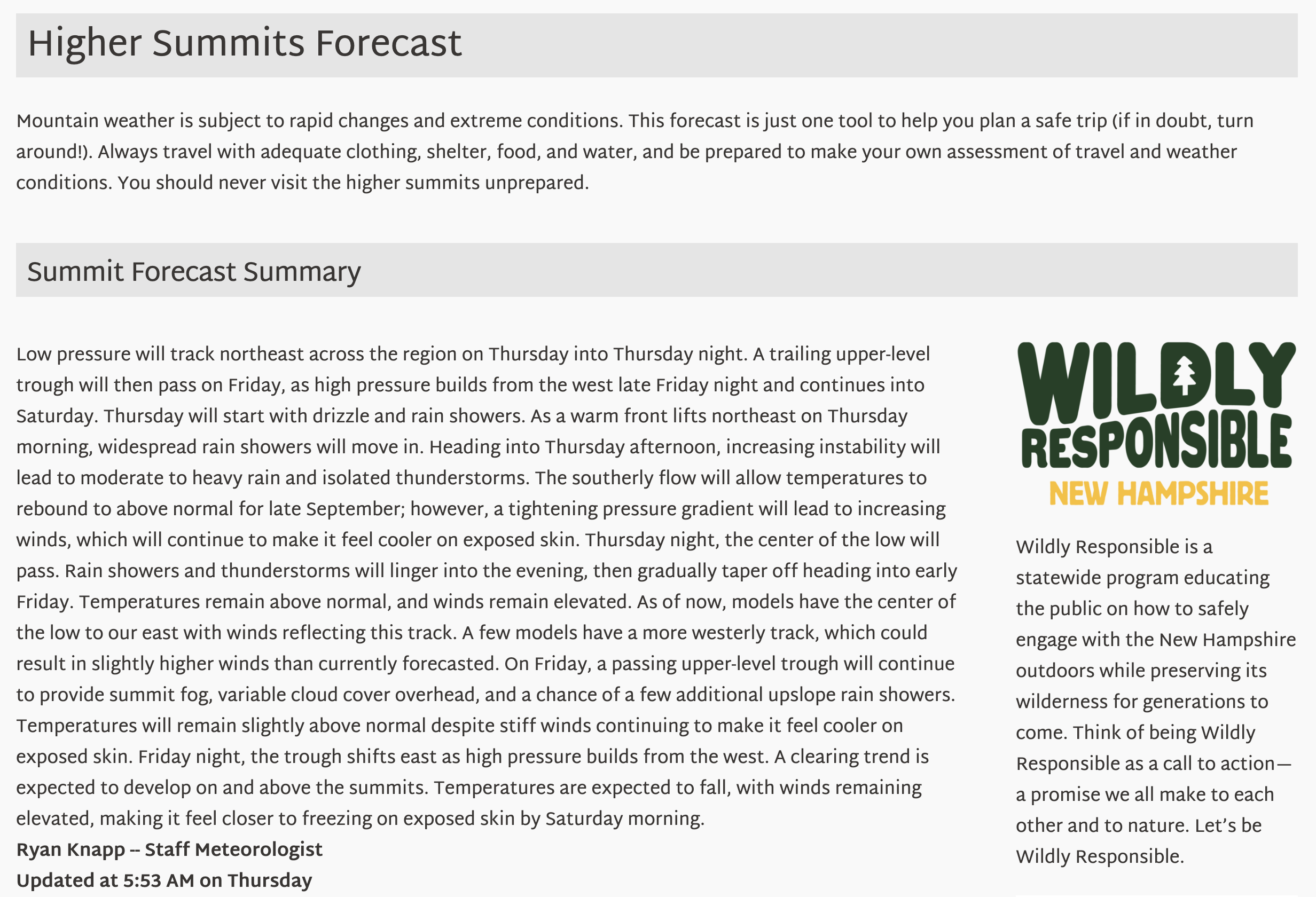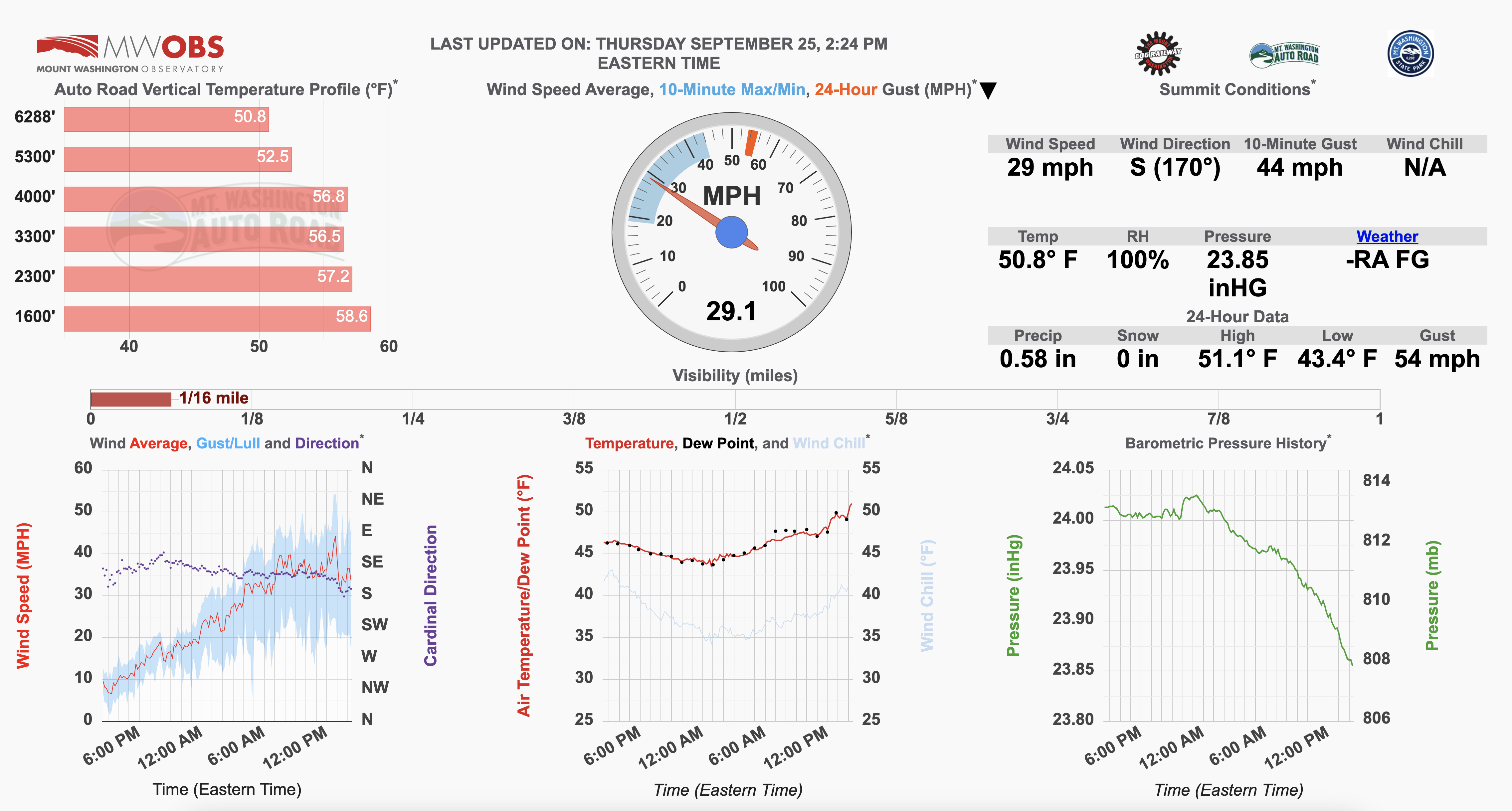Mountain weather tips every hiker needs
Tools and apps to track high-altitude weather in the White MountainsBefore the hike
Keeping with a common theme in hiking, your preparation is crucial. When it comes to weather, pulling out your phone to check the forecast won’t cut it. Your phone’s default weather app pulls from the nearest town, not the mountain you are about to hike. This is why it’s important to use hyper-local, elevation-adjusted weather services. Knowing what to expect at different elevations can be the difference between a safe day and a dangerous one.
Here are some weather services that we recommend:

NOAA (National Weather Service)
Use for: Viewing the radar to identify any incoming storm threats
Benefits
- Reliable, government-issued data
- Great for spotting regional weather patterns
- Easy-to-read
- Works offline

Use for: High-altitude hikes
Benefits
- Forecasts broken down by elevation
- Helpful for understanding how conditions will shift as you gain altitude
- User-friendly interface designed for hikers

Use for: Deep backcountry hiking
Benefits
- Pulls raw weather model data (the same info meteorologists use)
- Ability to input exact coordinates or locations
- Highly detailed and customizable
How to use: Drop a pin on your route and select the model. Look at the hourly chart for wind, temperature and precipitation to decide when it’s safest to hike above the treeline.
Use for: Hiking the White Mountains
Benefits
- Created by meteorologists who specialize in White Mountain weather
- Specifically tailored to higher elevations
- Provides critical details and context that explains how the weather will feel and what hazards to expect
How to use:
- Go to the MWOBS website and select “Current Summit Forecast.”
- Go to “Higher Summits Forecast” and read the forecast summary. This is where meteorologists explain incoming weather systems and possible risks.
- Pay special attention to wind: sustained winds above 40 mph make hiking above the treeline difficult — 50-70 mph can be dangerous and a sign to postpone your trek.
- Compare summit conditions to valley forecasts to understand how conditions will change as you gain elevation.
Pro tip: If the forecast mentions “in the clouds,” expect very low visibility—whiteout conditions are common even in the summer.
On Trail Tips
Even with perfect planning, it’s also important to be prepared for unexpected weather. Once you hit the trail, stay alert to the signs around you that might indicate inclement weather.
Cloud Cues
- Fluffy, cotton-like clouds usually mean fair weather and stable conditions


Other Signs to Watch For:
- 30/30 Lightning Rule: If you see lightning and hear thunder within 30 seconds, seek shelter immediately.
- Rising wind: A sudden increase in wind speed often signals that a front is moving in.
- Rapid temperature drop: A drop of 10-plus degrees in a short time is often a sign of an approaching storm.
- Sudden silence from birds/animals: Wildlife often reacts to changes in air pressure before humans notice. If birds go quiet, a storm could be close.
Staying aware of your surroundings while on the trail will help you notice warning signs early and keep you safe.
Responding to Danger
When weather does strike on the trail, knowing how to react quickly can be the difference between getting off the mountain safely and putting yourself at serious risk.
If lightning strikes in the area
- Get below the treeline: The safest option is to descend as soon as you hear thunder.
- Stay away from water: Ponds, rivers and even wet ledges can conduct electricity.
- Spread out your group: Don’t go too far, but try to stay at least 50 feet apart to reduce the chance of multiple injuries from a single strike.
- The lightning position: Crouch on the balls of your feet with your heels touching, minimize contact with the ground, and cover your ears to protect your hearing.
If heavy rain or cold moves in
- Put on waterproof layers early. It’s much harder to stay warm if you’re soaked.
- Watch for signs of hypothermia (shivering, slurred speech, clumsiness).
- Be careful of wet ledges or roots— they can be more slippery than snow or ice.
If strong winds develop
- Keep low to the ground in exposed areas
- Use trekking poles for balance but be prepared to stow them if gusts are too strong.
- If winds exceed safe levels (50+ mph), turn back
Finding shelter
- Look for lower ground, small depressions or groups of shorter trees.
- Never shelter under a lone tall tree or near cliffs/overhangs.
- If no natural cover exists, create a barrier between you and the ground (backpack, rope, foam pad) to reduce heat loss and prevent electrical conductivity.
Extra tips to stay ahead
- Start early: Notably in the White Mountains, many summer thunderstorms build throughout the day. Being on the summits in the morning and back below the treeline by early afternoon is the best way to reduce the risk of being caught in inclement weather.
- Look for the “Cap” on Mt. Washington: A lenticular cloud (shaped like a UFO) sitting on top of Mt. Washington often signals high winds and unstable weather across the higher summits.
- Be aware of Temperature + Wind: A 40-degree day with 30 mph has a wind chill close to freezing. Always look at the wind chill, not just air temperature.



